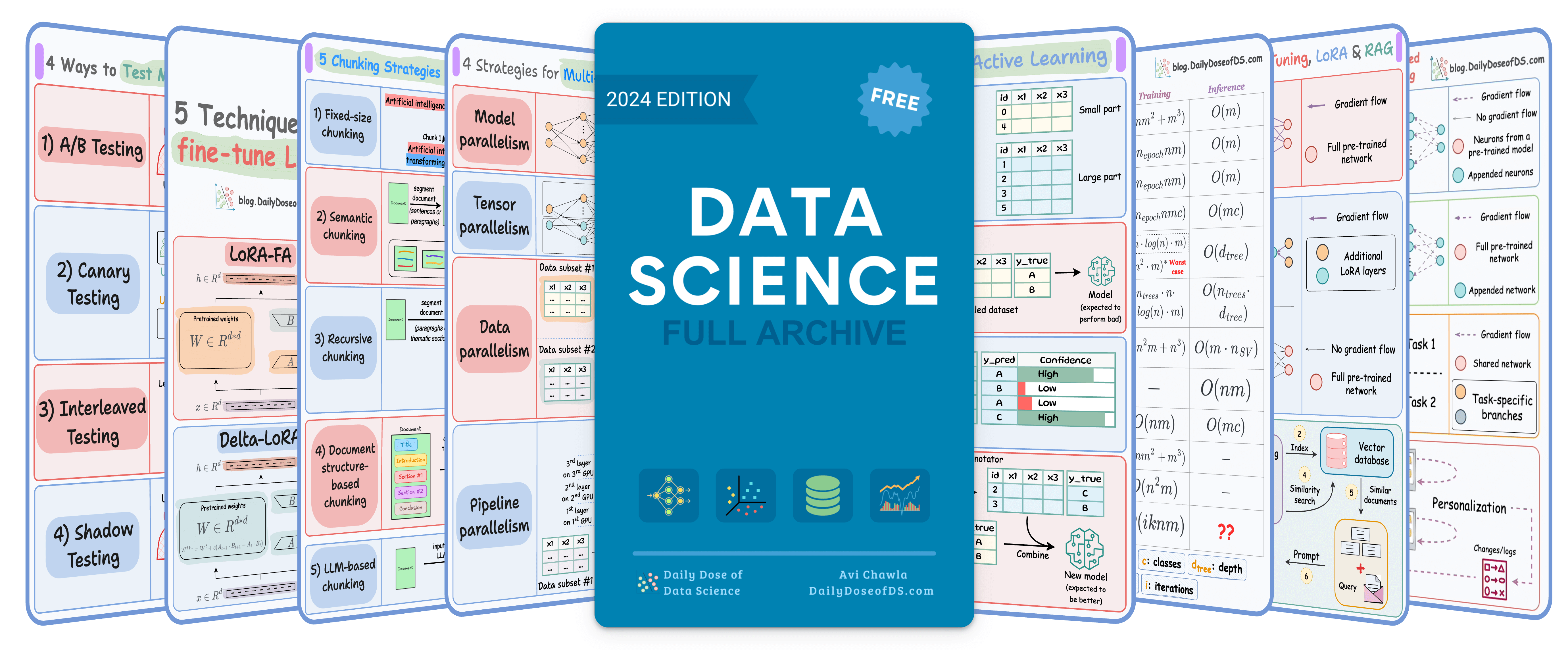

TODAY'S ISSUE
TODAY’S DAILY DOSE OF DATA SCIENCE
Build a Multi-agent Network with Agent2Agent Protocol
Agentic applications require both A2A and MCP.
- MCP provides agents with access to tools.
- A2A allows agents to connect with other agents and collaborate.
Check this visual to understand where A2A fits in the ecosystem:

Today, let us show you how to build an Agent network and communicate with Agents using the Agent2Agent Protocol.
- We’ll build three Agents and serve them locally.
- We’ll talk to them via the Agent2Agent protocol.
The code is linked later in the issue.
Let’s begin!
Serve an Agent
Here's how an Agent provider should serve/host their Agent.
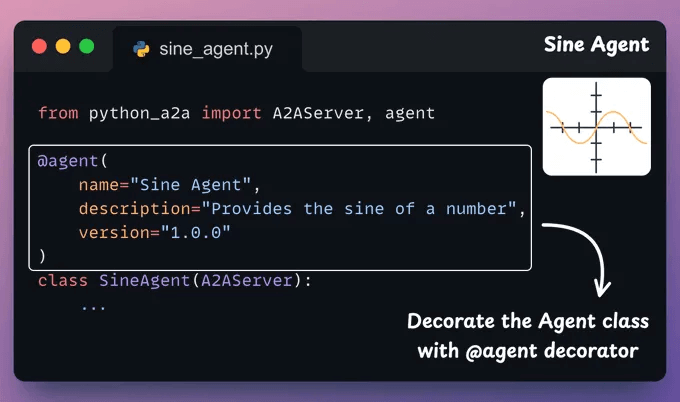
- Create an Agent class inherited from A2AServer.
- Decorate the class with the agent decorator. Also specify the agent name, description, and version.
Each Agent has some skills that it can expose to other Agents. So the class must declare a method with the @skill decorator.
For instance, a skill of our SineAgent is that it can compute the Sine of a number. This is implemented below:

In this method, you can add your Agent’s execution loop.
Moving on, an Agent can have multiple skills. Thus, a handle_task method accepts the input task, uses the available skills, and returns the output.
In our case, we simply invoke the Sine skill method after parsing the input.
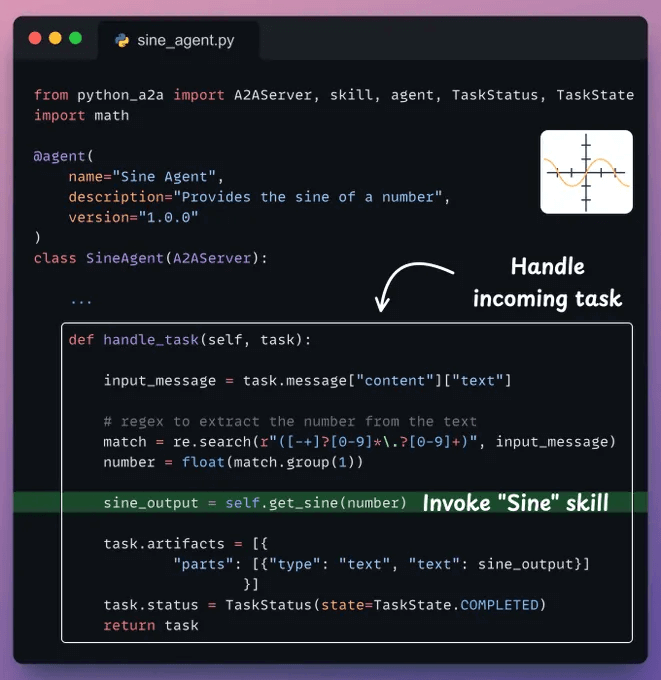
Finally, in the main body of the agent, we deploy the Agent:
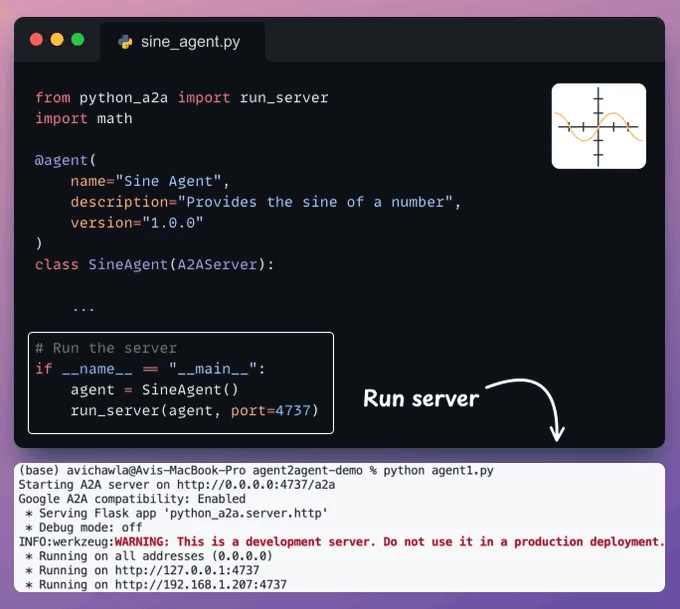
We repeat the same process to build and deploy a Cosine Agent as well:
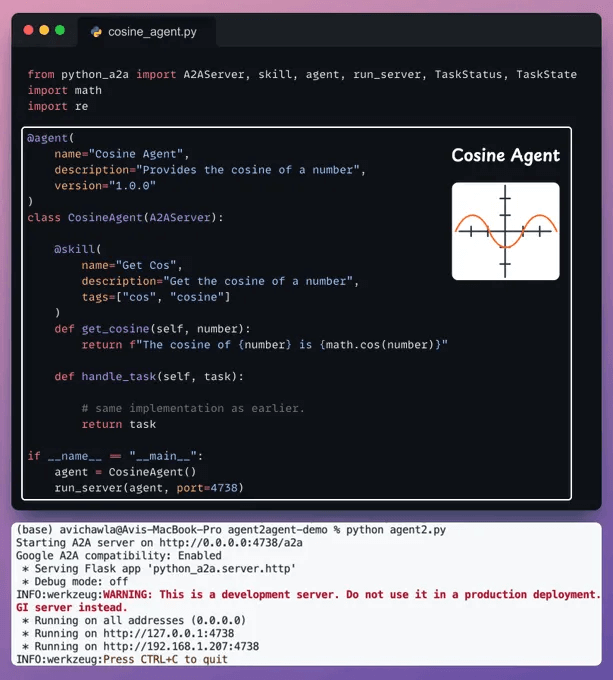
Finally, we repeat the same process to build and deploy a Tangent Agent:
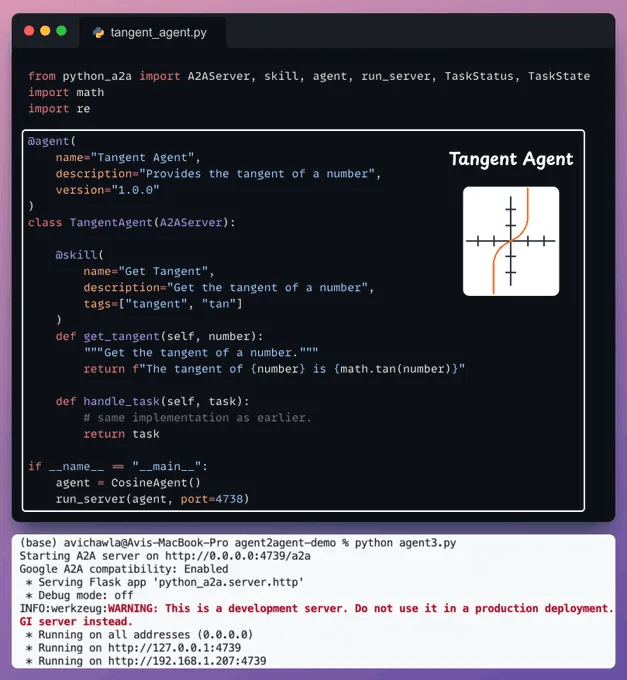
Client-side Agent integration
Now that Agents have been hosted and deployed, a client can integrate them into their existing applications.
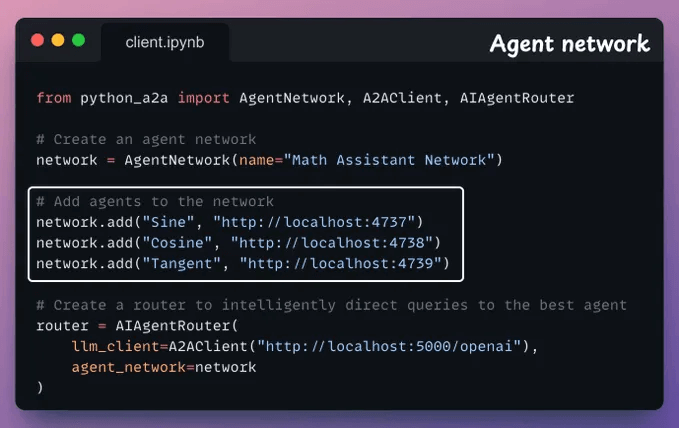
We also add a router to intelligently direct queries.
Query Agent network
With that, we can send a query to our network and see if it is routed to the appropriate Agent.
Below, we have a query to compute the Tangent, and our router directed it correctly to the Tangent Agent:
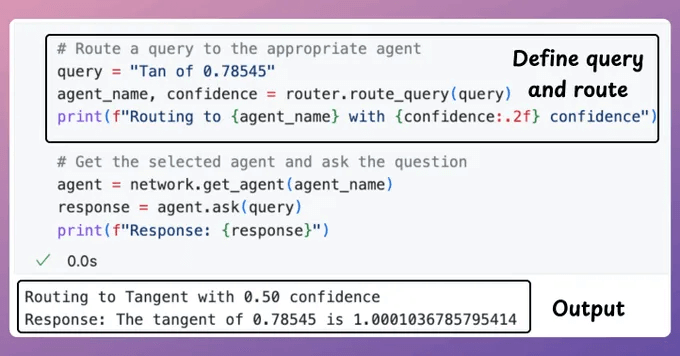
Below, we send another query and get the correct output again.
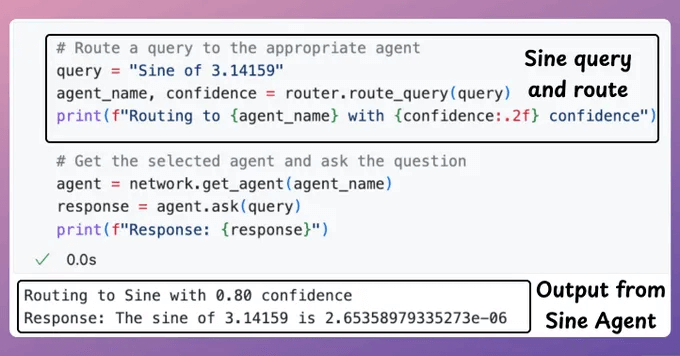
And that's how you can build and deploy your own Agent network and communicate with other Agents using the A2A protocol.
To recap:
- MCP provides agents with access to tools.
- A2A allows agents to connect with other agents and collaborate.
We intentionally kept this issue simple for explainability.
We’ll make this more practical in an upcoming issue. Stay tuned!
If you want to learn more about the basics of Agent2Agent Protocol, we covered it in this newsletter issue →
The code for today's issue is available in this repo →
Thanks for reading!
Hands-on demo
Build a Custom MCP Server for Cursor
Lately, there has been a lot of interest in MCPs.
Here's a step-by-step video walkthrough of creating your own MCP server!
It connects to Cursor and lets the Agent perform deep web searches and RAG over a specified directory.
Cursor IDE is our MCP host, and we connect it to our custom server.
Here’s the tech stack:

- Linkup for deep web search.
- Llama Index workflow to enable RAG.
Find the code on GitHub here → (don't forget to star the repo)
PRODUCTION ML (WITH IMPLEMENTATION)
5 techniques to test ML models in production
Despite rigorously testing an ML model locally (on validation and test sets), it could be a terrible idea to instantly replace the previous model with the new model.
A more reliable strategy is to test the model in production (yes, on real-world incoming data).
While this might sound risky, ML teams do it all the time, and it isn’t that complicated.
There are many ways to do this.
THAT'S A WRAP
No-Fluff Industry ML resources to
Succeed in DS/ML roles

At the end of the day, all businesses care about impact. That’s it!
- Can you reduce costs?
- Drive revenue?
- Can you scale ML models?
- Predict trends before they happen?
We have discussed several other topics (with implementations) in the past that align with such topics.
Here are some of them:
- Learn sophisticated graph architectures and how to train them on graph data in this crash course.
- So many real-world NLP systems rely on pairwise context scoring. Learn scalable approaches here.
- Run large models on small devices using Quantization techniques.
- Learn how to generate prediction intervals or sets with strong statistical guarantees for increasing trust using Conformal Predictions.
- Learn how to identify causal relationships and answer business questions using causal inference in this crash course.
- Learn how to scale and implement ML model training in this practical guide.
- Learn 5 techniques with implementation to reliably test ML models in production.
- Learn how to build and implement privacy-first ML systems using Federated Learning.
- Learn 6 techniques with implementation to compress ML models.
All these resources will help you cultivate key skills that businesses and companies care about the most.
SPONSOR US
Advertise to 600k+ data professionals
Our newsletter puts your products and services directly in front of an audience that matters — thousands of leaders, senior data scientists, machine learning engineers, data analysts, etc., around the world.






